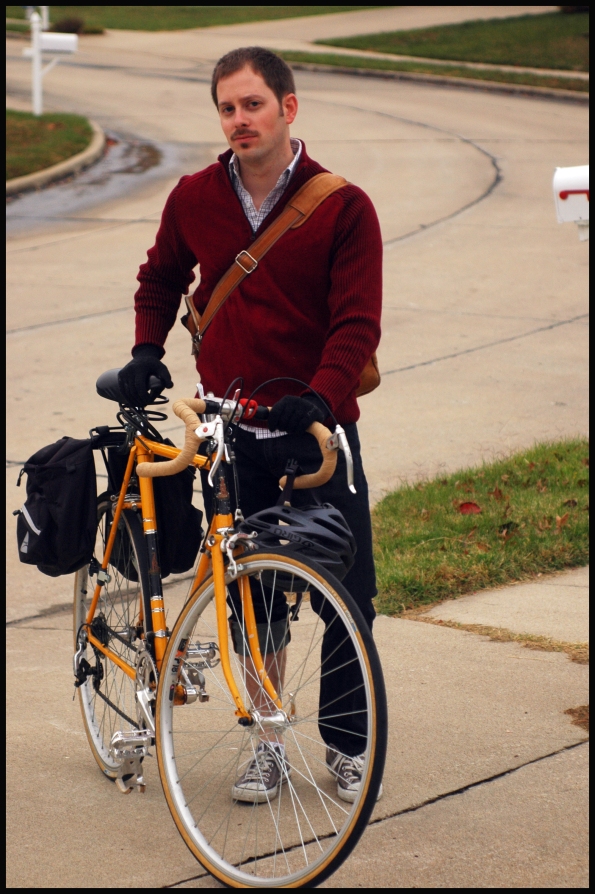It's now the final day of November and, as I'm sure my wife will be happy about, that means Movember is coming to an end. I did a half-assed job of participating in Movember. You see, as November approached, I knew that the month was dedicated to the growing and grooming of a moustache to raise awareness for mens' health issues - particularly prostate cancer. At that time, I had a well-trimmed full beard. I had some important business meetings on November 3rd, and I cut my beard short so as to look somewhat professional on that day. Then on the morning of November 4th, I groomed my facial hair into a tight moustache with the accompanying jazz spot (known more commonly as the soul patch):
Unbeknownst to me at the time, the rules of Movember state that participants must begin the month with a clean-shaven face and subsequently grow and groom the moustache throughout November. When I learned of this rule - by which time it was nearly a week into November - it seemed futile to start anew. So I just went with it, meaning that I broke the Movember rules and basically cheated.
Now that Movember is coming to an end, I guess the next step is to shave the 'stache and start growing the traditional winter beard. And on that note, I thought I'd share some interesting things that I've come across recently regarding beard-growth, bearded men, and beards in general. First off: the beard-second. I first discovered this extraordinary unit of length at The Evolving Scientist. Wikipedia defines the beard-second thusly, "the beard-second is a unit of length inspired by the light-year, but used for extremely short distances such as those in nuclear physics." It appears as though the most widely accepted conversion to SI units is 1 beard-second is equal to 5 nanometers. I deal with lengths at this scale quite often in my work and I'm looking forward to sneaking in a 'beard-second' reference in a future conference presentation.
Less fun is a study described in the journal Heart, Lung and Circulation in 2008. The article is titled 'Sternotomy and the Beard,' and it describes the difficulties associated with performing a sternotomy on patients with beards. As it turns out, beards can cause issues with mask ventilation, sterility, and effective skin preparation. The authors recommend folding the beard over the jaw, toward the patients' face, then securing it in that position using a surgical mask. This sounds pretty reasonable considering the alternative is to shave the beard off. I'd hate to wake up from surgery to find my beard gone. Then again, I don't allow my beard to grow so long that it would interfere with chest surgery. Yet.
And finally, a research group in Wisconsin examined the effect of beards on high altitude oxygen processing. The results showed that at a height of 7.5 km, bearded mountain climbers had a 7.3% increase in oxygen respiratory index (ORI). At 8.0 km, the increase in ORI grew to 10.7%. And at the summit - approximately 8.8 km - the gap widened to nearly 15%. That's a pretty significant difference, and good news for mountaineers who are unopposed to beard growth. Personally, I'll plan on using this little bit of information as further justification for my winter facial growth, even though I don't do much mountain climbing. Not that I really need any further justification. Keeping my face warm in the cold Missouri winter is reason enough.
Subscribe to:
Post Comments (Atom)




This was sent to me last year from a concerned friend...
ReplyDeletehttp://www.ncbi.nlm.nih.gov/pmc/articles/PMC547091/?tool=pubmed